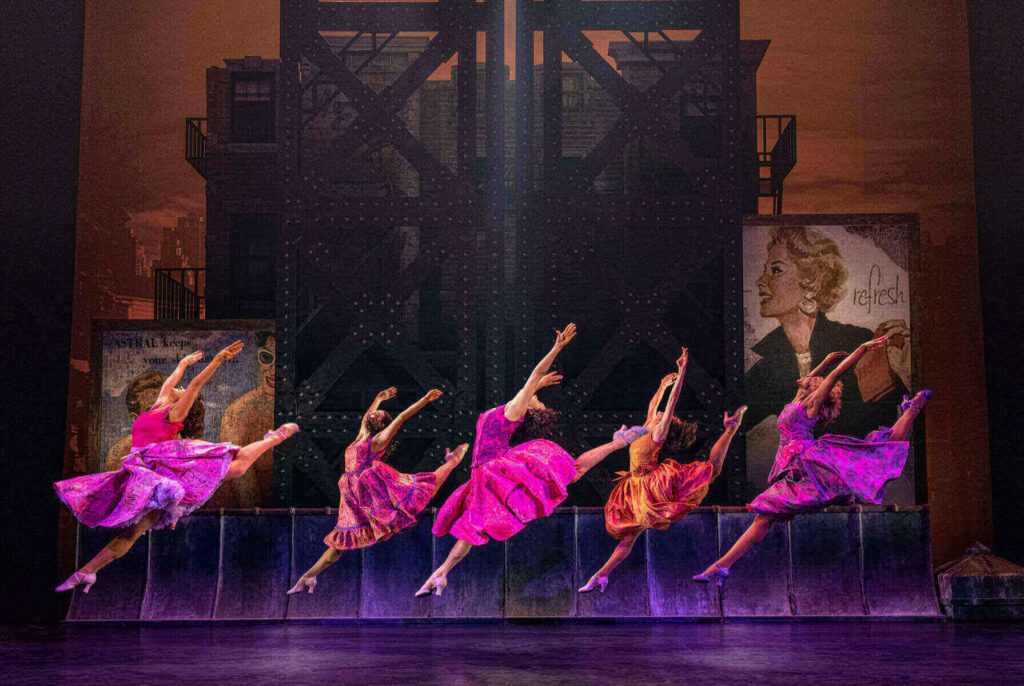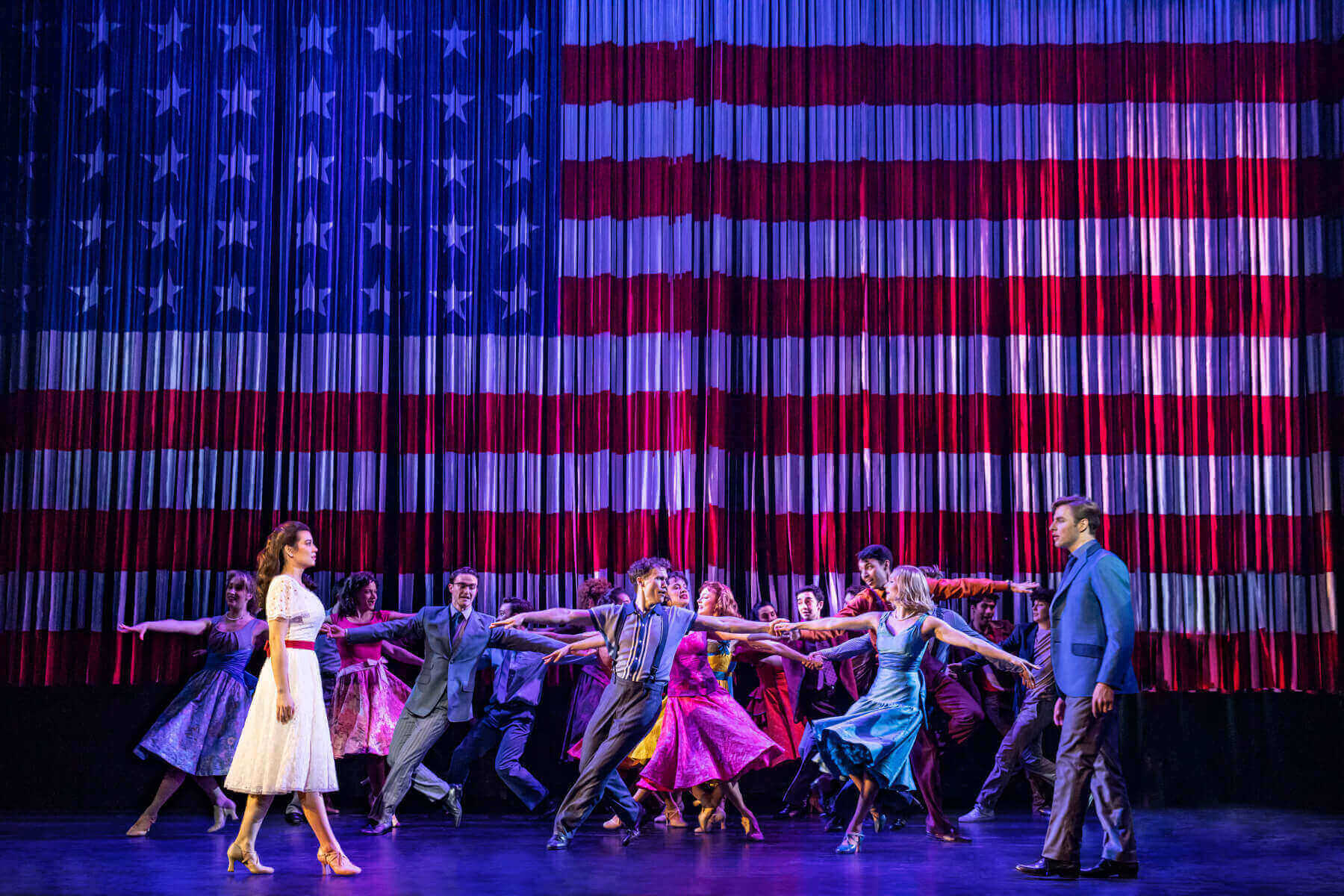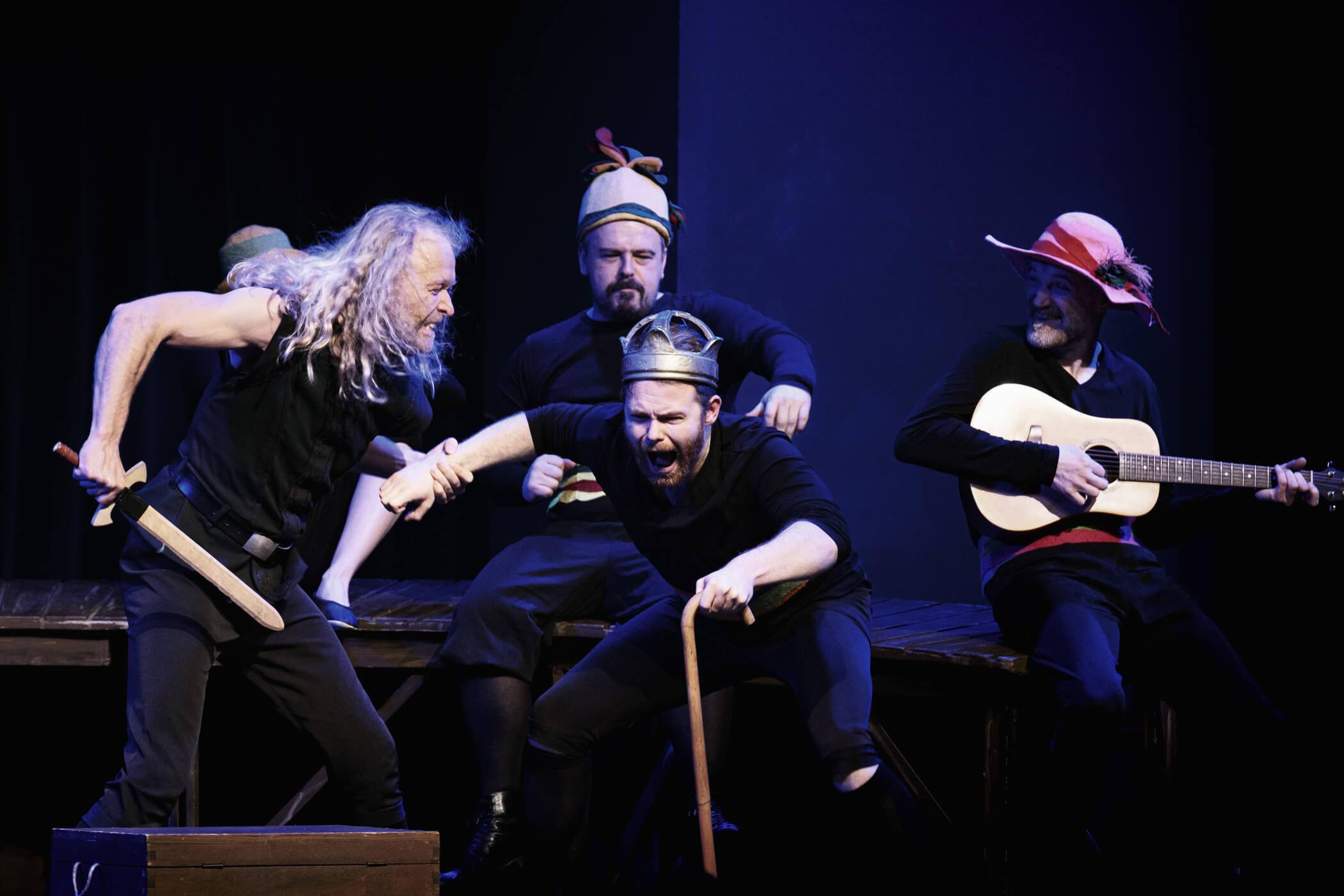Though love may be overdone at times, BB Promotion’s production of West Side Story reminds audience members that love conquers all.
Nearly 65 years after its debut on Broadway in New York, the cult classic West Side Story has rekindled the hearts of previous lovers of this musical as well as captivated the hearts of first-timers at its world premiere at the Deutsches Theater in Munich, Germany to a packed house. For many, West Side Story is the “modern” version of Shakespeare’s Romeo and Juliet, which it was based on. A tragic love story about feuding families, such a tale never gets old, but instead gets re-invented with the times. And so it is with the classic tale of West Side Story. Although BB Promotion’s production was not re-invented to modern day, perhaps a missed opportunity for the director, the moral of the story can still be related to in 2023.
In its original theater debut in 1957, as well as an Academy Award winning film that followed four years later, the realistic view of American society in late 1950s New York is brought to life. With Americans living in the aftermath of World War II and many cultures immigrating to the USA, the ideal of a tranquil, harmonious environment is shattered by the hatred and fear from groups of youths of different cultures. Fights, of course, ensue, but despite the animosity that grows over the course of the musical, love attempts to conquer all.
Love is in consequence a major theme in the BB Promotion’s World Tour of West Side Story. But how could it not considering its roots to Shakespeare? But perhaps for some, the love, in its over-the-top sentimental performance from the two main characters, was just a little too much after speaking with an audience member after the show.
As such, the love ran deep at times between the two principal actors. Actress Melanie Sierra, who played Maria, and actor Jadon Webster, who played Tony, had convincing chemistry, especially during their duet songs such as “One Hand, One Heart” and “Tonight.” However, they did need some time to warm up to one another it seemed. The connection between the actors when they first met at the dance in the beginning of the play didn’t seem as strong compared to the end of the production, which was surprising compared to the instant spark of the actors in the original 1961 film.
Staying true to the original production, director Lonny Price did right by original writer and director Jerome Robbins as well as Leonard Bernstein and Stephen Sondheim, original writers of the music and lyrics, whom he shared a close personal relationship with. Price was mentored by Sondheim and collaborated on performances with both Sondheim and Bernstein. Thus, the concept of late 1950s New York and the riff between the Puerto Ricans and white Americans was brought to life once more with Price’s production. This was accomplished due to the brilliance of the set design, costume design, choreography and music. All were superb making it difficult at times to know where to look because you didn’t want to miss a moment of the performance.
Every aspect of the story emerged in a vibrant way that it felt like a resurrection of the 1961 film, and I dare to say more entertaining. It easily put a smile on your face when the dance scene started and all the flare of the music, set, costumes and choreography came to life.
The set design created by Anna Louizos was a masterpiece itself. Built on wheels making it practical since the cast could assist in set changes, the New York buildings could function as boxes or windows into each part of the story. Not only could they be the sides of buildings with 1950s advertisement of an idealized America, but they could also open as well into the bedroom of Maria where we could look onto the intimate scene of two young lovebirds that try to overcome the hate of their crumbling world.

Furthermore, the costumes added to this revitalization of a classic. The dresses of the Puerto Rican women were colorful, fun and allowed for the best visual while dancing. You couldn’t keep your eyes off of them. Even one woman in the audience told me afterwards that her favorite part of the musical was the costumes—specifically the dresses.
With the dresses providing such a vibrant picture while dancing, the choreography could not be overlooked. Another audience favorite from a woman I spoke with, the dancing was literally on point. Just as in the original, the fights were more of a dance, especially the main rumble, which ended up being more exciting than the 1961 film version. They even re-did the fight with an additional dancing scene after Tony goes to Maria’s once the rumble is over. The duet “Somewhere” was turned into a dance that links to this second take of the rumble with Maria also present. This change from duet to dance was a nice addition to showcase the choreography of the production. And one dancer who couldn’t help but stand out during the dancing scenes was Riff’s girlfriend Graziella. Additionally, the action dances just grabbed you and dragged you in with them, along with the music that accompanied them.
Composed of 19 musicians and one Musical Supervisor, the band was phenomenal and received extra cheers at the end. The music stayed true to the original and was just as lively and invigorating as the 1961 film version. Some songs however switched roles as to who performed them, which made it a nice mix-up for the actors and production itself.
As to the performance of the cast, a few of them really made a lasting impression, specifically Maria who stood out for one audience member I spoke with after the show. The actress who played the leading female role did an outstanding job. She was able to portray the innocence, beauty, gaiety and feeling that were required of the role. She even made the song “I Feel Pretty” funnier than in the film. However, she wasn’t the only one to garner such praise. Her co-star Jadon Webster who played Tony gave a remarkable performance of “Maria” thus giving Richard Beymer, the original film Tony, a run for his money. Webster’s voice was simply melodic, especially during longer notes in his song “Something’s Coming.”
Once the final scene descended upon the audience, one couldn’t help but get goosebumps. Not having a happy ending that everyone hopes and waits for, West Side Story ends tragically just like its inspirer Romeo and Juliet. However, West Side Story leaves the audience with plenty to think over even in today’s modern society. Prejudice, hate and discrimination unfortunately are still present to this day. But despite all that, love does conquer all and not only the romantic kind of love, but the love for your neighbor and for those who may be different from you. We are all different and that isn’t something bad. Instead, we should embrace those differences to make this world better and that’s just what this time-honored classic gives us—hope for a better tomorrow.
BB Promotion’s West Side Story production is now on World Tour throughout Europe and will return to Munich at the Deutsches Theater for 10 days in January 2024.



